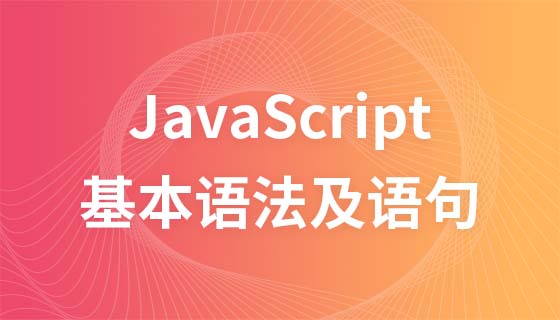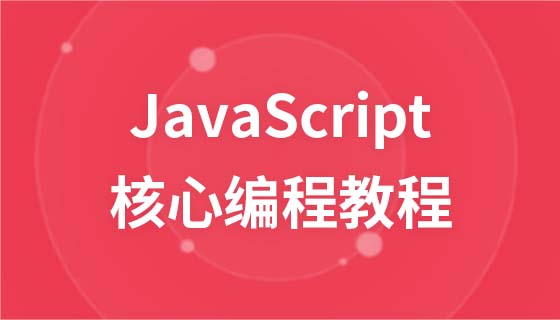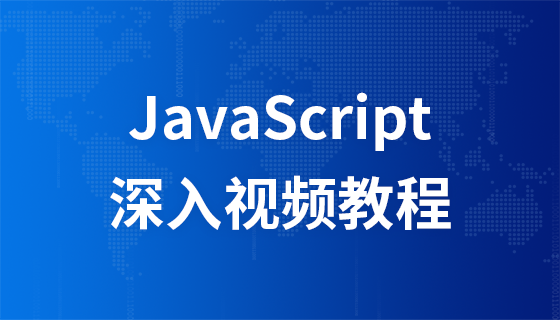
在ES6中,引入了同步iteration的概念,隨著ES8中的Async運算子的引用,是不是可以在一非同步操作中進行遍歷操作呢?
今天要跟大家講一講ES9中的非同步遍歷的新特性Async iteration。
在講解非同步遍歷之前,我們先回想一下ES6中的同步遍歷。
根據ES6的定義,iteration主要由三個部分組成:
#1、Iterable
先看Iterable的定義:
interface Iterable {
[Symbol.iterator]() : Iterator;
}Iterable表示這個物件裡面有可遍歷的數據,並且需要實作一個可以產生Iterator的工廠方法。
2、Iterator
interface Iterator {
next() : IteratorResult;
}可以從Iterable建構Iterator。 Iterator是一個類似遊標的概念,可以透過next存取到IteratorResult。
3、IteratorResult
IteratorResult是每次呼叫next方法都會得到的資料。
interface IteratorResult {
value: any;
done: boolean;
}IteratorResult中除了有一個value值表示要取得到的資料之外,還有一個done,表示是否遍歷完成。
下面是一個遍歷數組的例子:
> const iterable = ['a', 'b'];
> const iterator = iterable[Symbol.iterator]();
> iterator.next()
{ value: 'a', done: false }
> iterator.next()
{ value: 'b', done: false }
> iterator.next()
{ value: undefined, done: true }但是上的例子遍歷的是同步數據,如果我們獲取的是異步數據,比如從http端下載下來的文件,我們想要一行一行的對文件進行遍歷。因為讀取一行資料是非同步操作,那麼這就牽涉到了非同步資料的遍歷。
加入非同步讀取檔案的方法是readLinesFromFile,那麼同步的遍歷方法,對非同步來說就不再適用了:
//不再适用
for (const line of readLinesFromFile(fileName)) {
console.log(line);
}也許你會想,我們是不是可以把非同步讀取一行的操作封裝在Promise中,然後用同步的方式去遍歷呢?
想法很好,不過這種情況下,非同步操作是否執行完畢是無法偵測到的。所以方法並不可行。
於是ES9引入了非同步遍歷的概念:
可以透過Symbol.asyncIterator來取得到非同步iterables中的iterator。
非同步iterator的next()方法傳回Promises對象,其中包含IteratorResults。
所以,我們看下異步遍歷的API定義:
interface AsyncIterable {
[Symbol.asyncIterator]() : AsyncIterator;
}
interface AsyncIterator {
next() : Promise<IteratorResult>;
}
interface IteratorResult {
value: any;
done: boolean;
}我們看一個非同步遍歷的應用:
const asyncIterable = createAsyncIterable(['a', 'b']);
const asyncIterator = asyncIterable[Symbol.asyncIterator]();
asyncIterator.next()
.then(iterResult1 => {
console.log(iterResult1); // { value: 'a', done: false }
return asyncIterator.next();
})
.then(iterResult2 => {
console.log(iterResult2); // { value: 'b', done: false }
return asyncIterator.next();
})
.then(iterResult3 => {
console.log(iterResult3); // { value: undefined, done: true }
});其中createAsyncIterable將會會把一個同步的iterable轉換成一個非同步的iterable,我們將會在下面一個小節看一下到底怎麼產生的。
這裡我們主要關註一下asyncIterator的遍歷操作。
因為ES8中引入了Async運算符,我們也可以把上面的程式碼,使用Async函數重寫:
async function f() {
const asyncIterable = createAsyncIterable(['a', 'b']);
const asyncIterator = asyncIterable[Symbol.asyncIterator]();
console.log(await asyncIterator.next());
// { value: 'a', done: false }
console.log(await asyncIterator.next());
// { value: 'b', done: false }
console.log(await asyncIterator.next());
// { value: undefined, done: true }
}#使用for-of可以遍歷同步iterable,使用for-await-of 可以遍歷非同步iterable。
async function f() {
for await (const x of createAsyncIterable(['a', 'b'])) {
console.log(x);
}
}
// Output:
// a
// b注意,await需要放在async函數中才行。
如果我們的非同步遍歷中出現異常,則可以在for-await-of 中使用try catch來捕獲這個異常:
function createRejectingIterable() {
return {
[Symbol.asyncIterator]() {
return this;
},
next() {
return Promise.reject(new Error('Problem!'));
},
};
}
(async function () {
try {
for await (const x of createRejectingIterable()) {
console.log(x);
}
} catch (e) {
console.error(e);
// Error: Problem!
}
})();同步的iterable返回的是同步的iterators,next方法回傳的是{value, done}。
如果使用 for-await-of 則會將同步的iterators轉換成為非同步的iterators。然後傳回的值被轉換成為了Promise。
如果同步的next本身回傳的value就是Promise對象,則非同步的回傳值還是同樣的promise。
也就是說會把:Iterable<Promise<T>> 轉換成AsyncIterable<T> ,如下面的例子所示:
async function main() {
const syncIterable = [
Promise.resolve('a'),
Promise.resolve('b'),
];
for await (const x of syncIterable) {
console.log(x);
}
}
main();
// Output:
// a
// b上面的範例將同步的Promise轉換成非同步的Promise。
async function main() {
for await (const x of ['a', 'b']) {
console.log(x);
}
}
main();
// Output:
// c
// d上面的範例將同步的常數轉換成Promise。可以看到兩者的結果是一樣的。
回到上面的例子,我們使用createAsyncIterable(syncIterable)將syncIterable轉換成了AsyncIterable。
我們看下這個方法是怎麼實現的:
async function* createAsyncIterable(syncIterable) {
for (const elem of syncIterable) {
yield elem;
}
}上面的程式碼中,我們在一個普通的generator function前面加上async,表示的是異步的generator。
對於普通的generator來說,每次呼叫next方法的時候,都會回傳一個object {value,done} ,這個object物件是對yield值的封裝。
對於一個非同步的generator來說,每次呼叫next方法的時候,都會傳回一個包含object {value,done} 的promise物件。這個object物件是對yield值的封裝。
因為傳回的是Promise對象,所以我們不需要等待非同步執行的結果完成,就可以再呼叫next方法。
我們可以透過一個Promise.all來同時執行所有的非同步Promise操作:
const asyncGenObj = createAsyncIterable(['a', 'b']);
const [{value:v1},{value:v2}] = await Promise.all([
asyncGenObj.next(), asyncGenObj.next()
]);
console.log(v1, v2); // a b在createAsyncIterable中,我們是從同步的Iterable中建立非同步的Iterable。
接下來我們看下如何從非同步的Iterable中建立非同步的Iterable。
從上一節我們知道,可以使用for-await-of 來讀取異步Iterable的數據,所以我們可以這樣用:
async function* prefixLines(asyncIterable) {
for await (const line of asyncIterable) {
yield '> ' + line;
}
}在generator一文中,我们讲到了在generator中调用generator。也就是在一个生产器中通过使用yield*来调用另外一个生成器。
同样的,如果是在异步生成器中,我们可以做同样的事情:
async function* gen1() {
yield 'a';
yield 'b';
return 2;
}
async function* gen2() {
const result = yield* gen1();
// result === 2
}
(async function () {
for await (const x of gen2()) {
console.log(x);
}
})();
// Output:
// a
// b如果在异步生成器中抛出异常,这个异常也会被封装在Promise中:
async function* asyncGenerator() {
throw new Error('Problem!');
}
asyncGenerator().next()
.catch(err => console.log(err)); // Error: Problem!异步方法是使用async function 声明的方法,它会返回一个Promise对象。
function中的return或throw异常会作为返回的Promise中的value。
(async function () {
return 'hello';
})()
.then(x => console.log(x)); // hello
(async function () {
throw new Error('Problem!');
})()
.catch(x => console.error(x)); // Error: Problem!异步生成器是使用 async function * 申明的方法。它会返回一个异步的iterable。
通过调用iterable的next方法,将会返回一个Promise。异步生成器中yield 的值会用来填充Promise的值。如果在生成器中抛出了异常,同样会被Promise捕获到。
async function* gen() {
yield 'hello';
}
const genObj = gen();
genObj.next().then(x => console.log(x));
// { value: 'hello', done: false }本文作者:flydean程序那些事
本文链接:http://www.flydean.com/es9-async-iteration/
更多编程相关知识,请访问:编程视频!!
以上是詳解ES9中的新特性Async iteration的詳細內容。更多資訊請關注PHP中文網其他相關文章!




